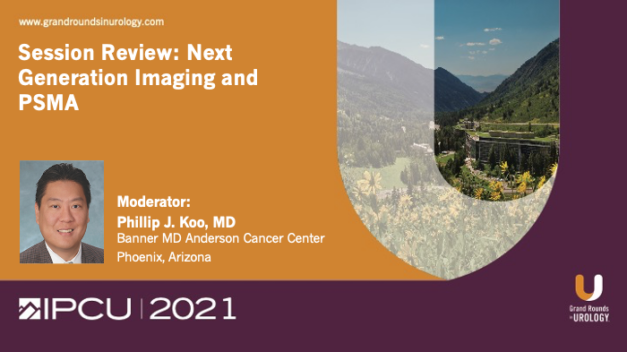PSMA Targeted Therapies and the Role of the Urologist
Phillip J. Koo, MD, Division Chief of Diagnostic Imaging and Northwest Region Oncology Physician Executive at the Banner MD Anderson Cancer Center in Phoenix, Arizona, discusses PSMA targeted therapies for prostate cancer and the urologist’s role in using radiotherapy. He begins by looking at the results of the VISION trial of lutetium-177 PSMA-617 for metastatic castration-resistant prostate cancer (mCRPC), explaining that radioligand therapy significantly increased overall survival and radiographic progression-free survival. Dr. Koo then considers the TheraP trial of lutetium-177 PSMA-617 versus cabazitaxel which saw far better PSA response in PSMA arm than in the cabazitaxel one. He notes that the amount of imaging used in patient selection for TheraP would be impractical in a real-world setting. Dr. Koo also looks at the slate of upcoming clinical trials of PSMA, highlighting the number of combination therapy trials in the CRPC setting, as well as the number of trials looking at PSMA’s potential role in earlier phases of the disease. Finally, Dr. Koo discusses the role of the urologist in the new PSMA era, arguing that urologists need to understand and be comfortable with PSMA since it is an increasingly important tool for treating advanced prostate cancer. He recommends that urologists create advanced prostate cancer clinics featuring targeted radiotherapy clinics.
Read More

